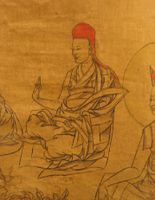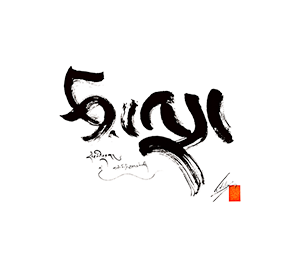| PersonType
|
Category:Classical Tibetan Authors
|
| MainNamePhon
|
Śākya Chokden
|
| MainNameTib
|
ཤཱཀྱ་མཆོག་ལྡན་
|
| MainNameWylie
|
shAkya mchog ldan
|
| YearBirth
|
1428
|
| YearDeath
|
1507
|
| BornIn
|
gsang mda' bang rim
|
| TibDateGender
|
Male
|
| TibDateElement
|
Earth
|
| TibDateAnimal
|
Monkey
|
| TibDateRabjung
|
7
|
| ReligiousAffiliation
|
sa skya
|
| StudentOf
|
rong ston shes bya kun rig · don yod dpal ba · Ngorchen Kunga Zangpo · spyang lung chos sdings gzhon nu blo gros
|
| BDRC
|
https://www.tbrc.org/#!rid=P396
|
| Treasury of Lives
|
https://treasuryoflives.org/biographies/view/%C5%9A%C4%81kya-Chokden/6351
|
| IsInGyatsa
|
No
|
| BnwShortPersonBio
|
Śākya Chokden was one of the most important thinkers of the Sakya tradition. His teachers were Rongtön Sheja Kunrik, Dönyo Pelwa and Ngorchen Kunga Zangpo. A thinker who accepted both the rangton and zhentong, or "self-empty" and "other empty" views of Madhyamaka, Śākya Chokden's seat was at Serdokchen Monastery near Shigatse in Tsang. Influential and controversial in his own day, his writings fell out of favor over time and many were banned in the seventeenth century.
|
| PosBuNayDefProv
|
Definitive
|
| PosBuNayDefProvNotes
|
Both
|
| PosAllBuddha
|
Qualified No
|
| PosAllBuddhaNote
|
All beings possess a "nominal" buddha-nature as is taught in the second-wheel teachings, while only bodhisattvas on the first bhumi and up (i.e. Noble Bodhisattvas) possess the "actual" buddha-nature as it was taught in the third-wheel teachings. (see note from Karl below)
|
| PosAllBuddhaMoreNotes
|
- "Though everyone including ordinary beings possesses wisdom in a nonmanifest manner, only bodhisattvas on the first bhūmi onward manifest this wisdom as the direct realization of ultimate reality. This means that only such bodhisattvas possess the actual tathāgata heart in that they see at least certain degrees of purification of the stains that cover the tathāgata heart as well as its inseparability from certain degrees of buddha qualities. Ordinary beings thus do not possess this actual tathāgata heart at all, while buddhas possess it in its completeness. In other words, the close connection between seeing the tathāgata heart free from adventitious stains and possessing it, as well as between becoming free from adventitious stains and “attaining” the qualities of a buddha, is a prominent feature of Śākya Chogden’s interpretation of tathāgatagarbha." Karl Brunnhölzl, When the Clouds Part, p. 78.
- See also Wangchuk, Tsering, The Uttaratantra in the Land of Snows, p. 114.
|
| PosWheelTurn
|
Third Turning
|
| PosWheelTurnNotes
|
He distinguishes between different types of buddha-nature taught in the second and third wheels, though the third is the more definitive and represents the "actual" tathāgatagarbha.
|
| PosYogaMadhya
|
Madhyamaka
|
| PosEmptyLuminNotes
|
- "In sum, Śākya Chogden distinguishes three kinds of tathāgata hearts: (1) the nominal tathāgata heart that is the mere natural purity (as taught in the second dharma wheel and its Madhyamaka commentaries), (2) the actual tathāgata heart that is the purity of adventitious stains and represents the relative tathāgata heart (as taught in the third dharma wheel and the Nonaspectarian system of Maitreya and Asaṅga, as well as in the teachings of expedient meaning in the second dharma wheel as these are interpreted by the third dharma wheel), and (3) the actual tathāgata heart that is the natural purity that is inseparable from all buddha qualities and represents the ultimate tathāgata heart (as taught in the system of Maitreya and Asaṅga and in the third dharma wheel)." Karl Brunnhölzl, When the Clouds Part, p. 78.
- See also Wangchuk, Tsering, The Uttaratantra in the Land of Snows, p. 115.
|
| Other wikis
|
If the page does not yet exist on the remote wiki, you can paste the tag {{PersonCall}} inside the destination page. But please first make sure you are on the right page. Some wikis have the person page on Person/<COMMONS PERSON PAGENAME>, in which case the page <COMMONS PERSON PAGENAME> needs to be redirected. Ask if you need clarification.
|

